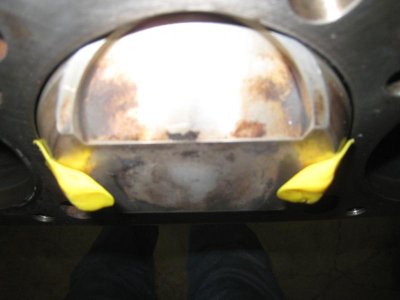i find this post interesting. so to me a small block chevy is something you may take internet advice from. a 20,000 hemi engine probably not. there are several things that play into how much clearance you should have. bore size, a smaller bore like a ford mod motor at 3.550 can run a tighter clearance. i have ran them down to .025 no issues. piston to wall, a loose piston requires more clearance. also rod type, and bearing clearances, loose motors require looser clearances. granted i've only built one mopar hemi (my own), done several 814ci for IHRA ford hemi's. when i bought my valve gear off Dean Nicopolis, a guy whom has build more hemi's than anyone on this board, he stressed to me the importance of having enough dome to head clearance. he is the one that told be about the solder for checking purposes. granted if your motor is just a cruise night type of deal, then your probably just fine. if your tell tale is more likely to end up of 7800 then i would add a little wiggle room. Why don't you call indy and ask them what the intended clearance should be (they should know, they build enough). to me it seems tight, i don't know how you run the motor, or what type of head gaskets you had on it. how its built, etc. sometimes if the piston is hitting the head it can be hard to tell, obviously if there was no carbon on the side of the domes and they were clean, then its to tight. i error on the side of caution, that way im not working on the damn thing constantly. the Pythagorean theorem is correct though when you go up on head gasket thickness, adding .010 will not get you the same on the side of the dome.
















